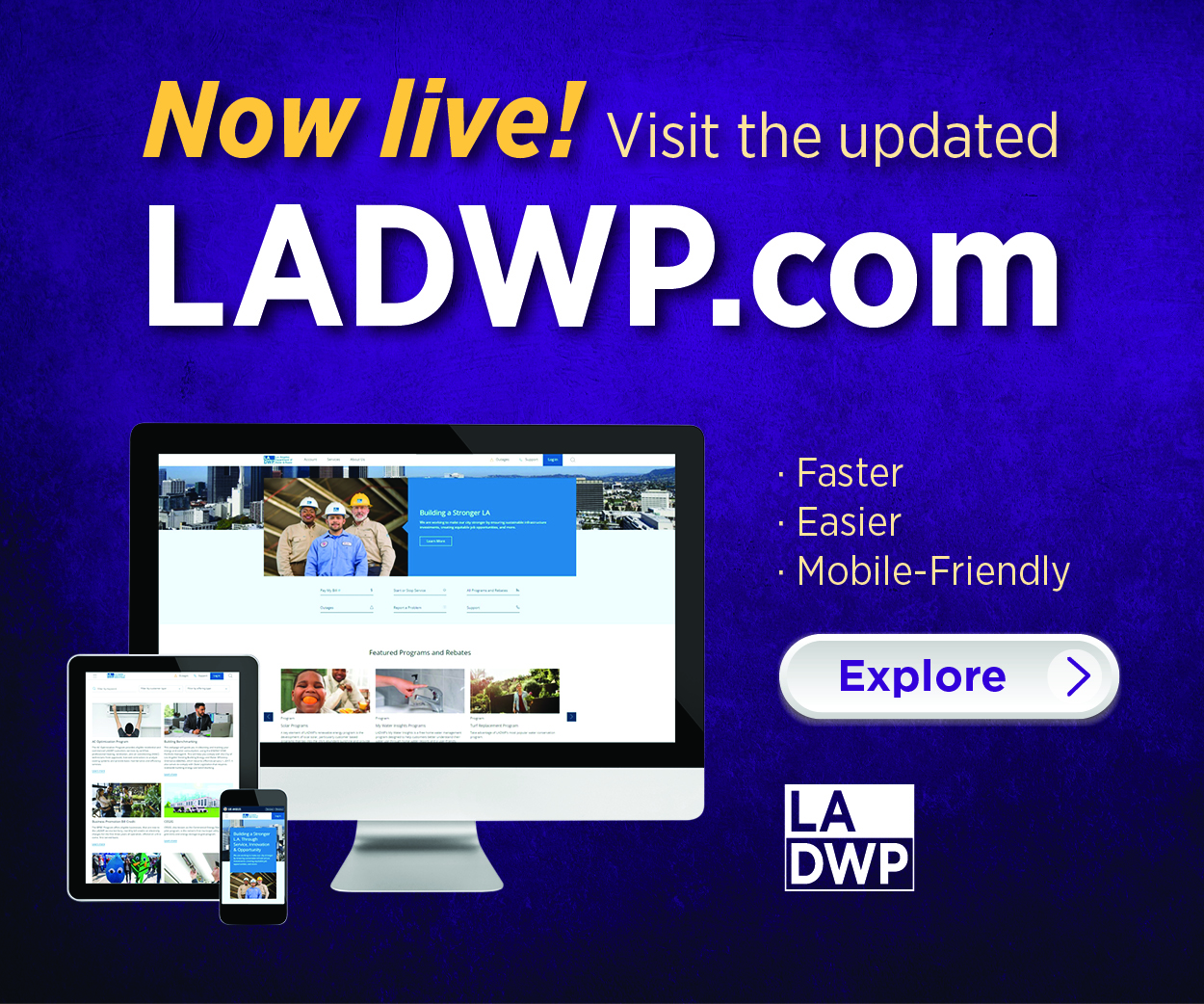Comments
CITY OF LA - Los Angeles received gold for hosting the 1984 Olympics, but the upcoming 2028 Games are sporting a less eminent atmosphere, one where the city may drop the baton. It is all the result of budgets, planning, and coordination. The sad outcome may be worldwide embarrassment, now ominously hanging over the City of the Angels.
Public transportation is the tangible core of an Olympic city. Efficient transportation, improved accessibility of venues, and reductions in air quality and noise pollution collectively contribute to seamless connectivity, marking a notable achievement. Every host city always upgrades and modernizes its public transit systems.
In 1984, terminal gridlock did not occur as feared, causing athletes and fans to be stranded, because years of preparation by the Southern California Rapid Transit District (RTD) delivered a flawless transportation plan that yielded easy and unobtrusive travel. In contrast, today’s Metro (Los Angeles County Metropolitan Transportation Authority) has yet to choose a consultant to design the LA28 Olympics transportation plan.
Paradoxically, RTD did not engage consultants at the cost of tens of millions. Its Olympic Transportation Plan was planned, coordinated and stimulated with numerous transportation partners and operators, police departments, traffic control officials, and more than fifty federal, state, county, and local agencies.
Today, despite the pressure of time, there is no apparent organizational structure, and no feasible forward path to deal with transportation issue in the LA28 Olympics. The car-culture of the city, thus far, remains unchanged, despite the prospective cries of the mayor who wants a “no-car Games.” Mayor Karen Bass seeks to make transit and active transportation the primary focus for the Olympics, but aspiring pronouncements alone do not produce structured courses.
The 1984 Olympics chair Paul Ziffren appointed me to the Olympic Citizens Advisory Commission. Under my direction as president of the RTD board of directors, along with RTD planners, John Dyer, general manager, and Art Leahy, chief of bus operations, a complex transportation plan was devised. We opted to start a second bus fleet from scratch, one that would provide direct service to the major Olympic venues. Noteworthy is the fact that there was no rail network in 1984.
Then, our 550-bus Olympic fleet ranked the fourth largest public transit district in California. Its operation required more than one thousand workers, including four hundred temporary drivers who had to be hired and trained. To RTD’s credit, administrative employees left their desks and worked in the field as passenger assistants, providing fare exchange and information, and supervised bus traffic and security at the various terminals.
Again, in contrast, the planned 3,000 bus fleet proposed for the LA28 Olympics is still not funded, a tall requirement that adds up to $2 billion. The Trump Administration has not responded as of this writing on whether it will help fund the city’s transportation needs for the Games. Additionally, facing the $1 billion deficit, the mayor plans significant cuts to the Department of Transportation, threatening major transit plans for the Olympics with the reduction of $7 million in expenses and the elimination of nearly 24 percent of the workforce.
In 1984, complexity was added to our transportation obligation with the Games being held in 24 venues spread over 200 miles. In most past Olympics cities, events were scheduled in one central location. The numbers we had to deal with were staggering. Some seven hundred thousand visitors were expected to arrive in Los Angeles each one of the 16-day Olympic period. Most popular events, like track and field, were set for the Coliseum in Exposition Park, USC for swimming and diving, and UCLA for tennis and gymnastics—all known for severe parking shortages and dreadful traffic. We were expected to carry 40 percent of all spectators to these sites.
Substantial bus demands were anticipated for the Rose Bowl, the Forum, Dodger Stadium, Long Beach and Anaheim Convention Centers, Loyola Marymount University, and Santa Anita Racetrack.
Another important factor in the organization of the 1984 Games was Los Angeles Olympics Organizing Committee president Peter Ueberroth’s strategy of appointing commissioners at each venue, thus streamlining operations, minimizing confusion and ensuring smooth execution of events.
On top of it all, we were charged with one overriding demand: this special transportation service was to be implemented “without the use of tax dollars.”
In addition, Councilman Bob Ronka with the support of Councilman Zev Yaroslavsky, authored Charter Amendment N, forbidding Los Angeles from spending taxpayer monies on the Games.
For months, the system’s efficiency was tested. We knew exactly what to expect: platoons of buses would arrive or depart from the Coliseum every ten seconds; reserved bus lanes were to be established; freeway ramps near Exposition Park had to be open only to buses; and bus operators had the opportunity to radio timely status reports to the State Traffic Coordination Center enabling immediate responses to bottlenecks.
To effectively communicate all of this, more than one million service brochures were distributed worldwide. And buses were clearly identified with the Olympic emblem.
The traffic Armageddon predicted to loom over the region during the Games never materialized. However, LA28 is another story. The sharp difference is today’s slow planning. So slow, in fact, that the alarm bell should be ringing.
Hosting an Olympics is complex and ladened with risks. Requiring coordinated political leadership, Los Angeles is exhibiting political malaise. The recent disconnect in the wildfire recovery efforts, with separate and often competing initiatives, does not place much faith in the required multi-agency cooperative spirit demanded by the Olympics.
A wasteful chase for $3.2 billion federal funds for capital improvements that had a weak nexus to the Olympics has eaten up three years, a time interval that should have been dedicated to developing a coherent mobility plan. The remaining time before the Games is short and unprecedented in Olympic history for locking up funds, the vital blood flow for success.
Managing and coordinating the design, construction, and procurement of facilities is dependent on an interagency workflow, at the tactical level. The current executive-level framework lacks a robust governance structure to address this most critical function.
The known Olympic mobility plan, thus far, is an odd strategic error that will likely cause stagnation, obstruction and congestion. Rather than directing the spectators away from vulnerable Metro hubs, it directs the flow to those hubs and lines, overwhelming them. Instead, spectators should be directed to large satellite bus-based park-and-ride hubs that can be scaled up to meet surges in a way that Metro Rail cannot. Shockingly, officials who traveled to Paris and viewed how stretched to the limit the city’s rail capacity was, although it was five times the size of Metro Rail, thought that it was a good idea to double down on making Metro Rail stations the biggest mobility hubs for the 2028 Games.
Mobility in a city with major events requires innovation. The ‘transit first’ concept is understandable, but it is not realistic. It may require support from the travel markets, the rental car industry and transportation network companies like Uber/Lyft/Waymo with possible supply strategies, pricing, tolling, and the correct calibration of incentives and disincentives.
Dan Rosenfeld, a civic leader with extensive public and private sector experience, remembers the 1984 Olympics as a joyous time where the architecture and graphic design communities mobilized to create a “look” for Los Angeles that was culturally perfect, visually bold, appropriately inexpensive to build and above all, inspire!
Ewan Morgan, writing in the Los Angeles Times in 2021, said the colors selected for the Games were magenta and yellow which are associated with the Pacific Rim, Asia and Latin America, while aqua is Greek and Mediterranean, a strong counterpoint to the warmer colors. If L.A. was a cultural melting pot, then so too was the Games' palette.
Rosenfeld said that it was Jon Jerde, Deborah Sussman and Paul Prezja who took some influence from the 1968 Mexico City Olympic designs to create inspired visuals.
He said that preparations for our 2028 Olympic Games appear to be taking place in secret, if they are taking place at all. No vivid colors, no bursts of cultural creativity, no compelling social unification. “In contract with 1984, we live now in a city almost bankrupted by public employee pensions, extreme income stratification, serious housing shortages, intense traffic, empty water reservoirs and a collective malaise.”
Facing a billion-dollar budget deficit, significant changes to the venue locations for the 2028 Olympic Games have already been announced, moving several events outside the city limits and seeking to minimize local costs. However, experts warn that the 2028 Summer Olympics in Los Angeles could cost more than planned and potentially become a financial pitfall for the city.
Competing priorities are many in a city with money problems. The time is here for leadership and creativity, for inspiration and formulation. Bob Knight, USA men’s basketball coach, an Olympic gold medalist said it best: “The key is not the will to win. Everybody has that. It is the will to prepare to win that is important.” =
(Nick Patsaouras was president of the Southern California Rapid Transit District during the 1984 Olympic Summer Games. This article is an excerpt from his book, “The Making of Modern Los Angeles.”)
















